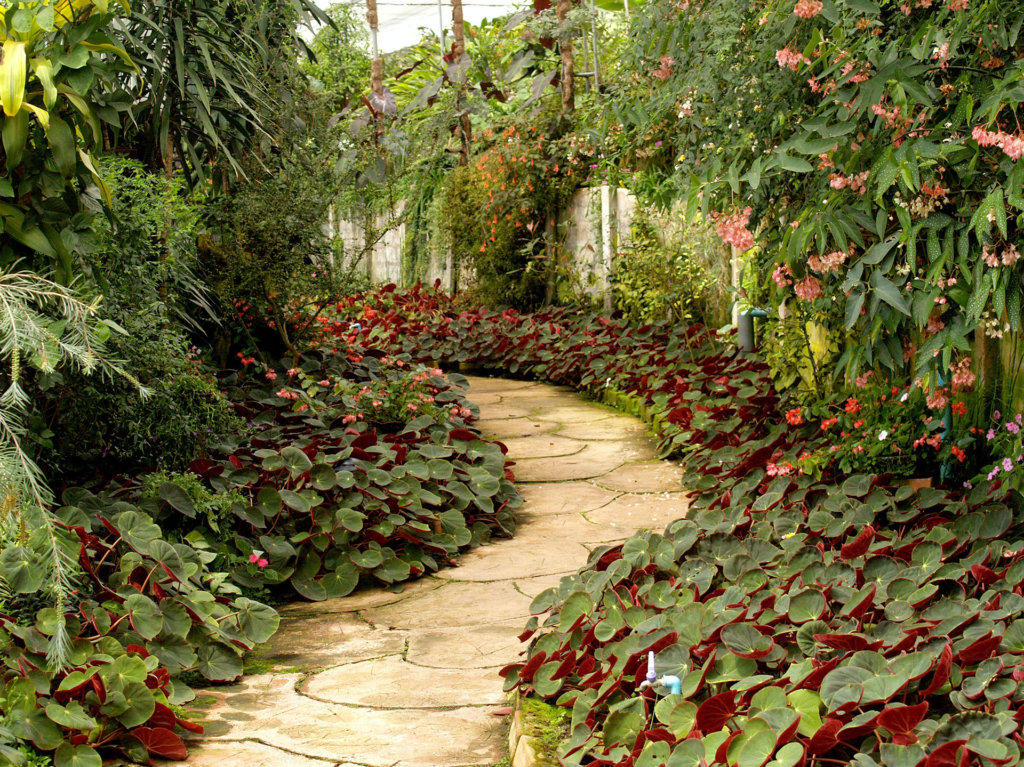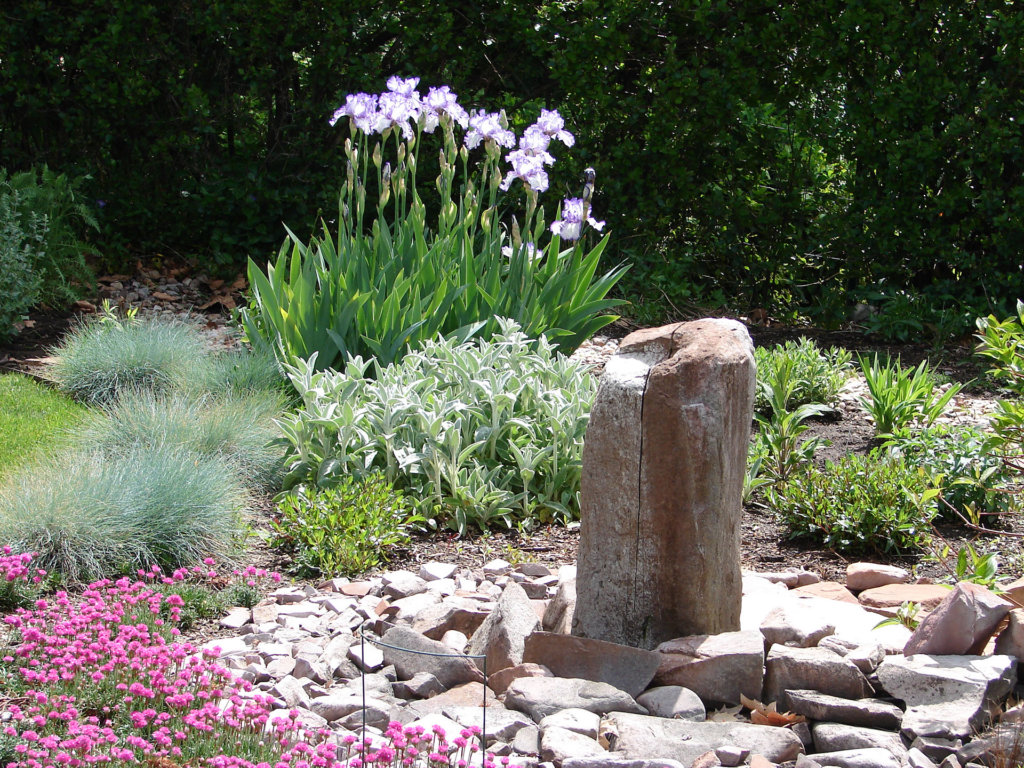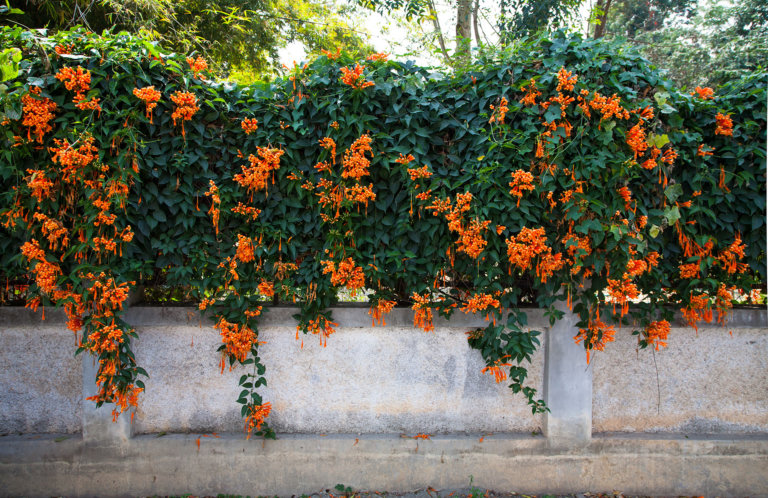Desert landscaping, also known as xeriscaping, is all the rage nowadays and for good reason. Firstly, it adds a rustic yet charming touch to your home’s landscape, which boosts your curb appeal. Secondly, the wildflowers and plants used as part of the décor don’t require any maintenance.
These hardy plants exist independently and adapt to changing weather conditions. You can be assured that you won’t see a wilting plant one season and the same one thriving in another. If you don’t want to place those kitschy garden gnomes in your front yard or plant another rose bed, then we suggest moving on to wilder pastures. See what we did there?
Here are 15 desert landscaping ideas that we believe will spruce up your front yard or backyard and turn it into a masterpiece:
#1: Create Your Very Own Hot Springs

Just because you’re not on vacation, it doesn’t mean you can’t enjoy some lazy hours in a hot spring. Installing a swimming pool in your backyard can be quite expensive. Moreover, it may actually reduce the value of the house.
A hot spring, on the other hand, can be created top side with a few rock formations and can be easily deconstructed later. This landscaping idea is pretty easy to create. You can either call in a professional to build the bones of the hot spring structure or use cement to create it yourself. To get flowing hot water, all you have to do is connect a pump and boiler, and you have your very own artificial hot spring.
#2: Create a Nature Walk to Stroll Through When Feeling Down

The star of this landscaping idea is wood spurge. This bushy evergreen perennial is native to European woodland locations. It is quite dense and can be used to fill spaces, which is why it will work so well on the pathway that will open into your backyard. Imagine leading your guests through this pathway into your backyard party. They will feel like they have entered a fairytale land, full of green beauty.
You can easily create this look by first paving a curving pathway. As for the sides, mix it up with climbing foliage such as hoya plants and hide the pots behind the bush. If you don’t want to use your house’s sidewall for the trellis to take a hold on, then we suggest fencing the pathway. This way, you will be able to clear the area by simply taking down the fence.
#3: Incorporate Stone Design

A combination of wild sunset plants and light perennials can help you create a sparse-looking landscape, which you can then fill with rock formations. If you don’t like thick foliage, then this is the best way to set your backyard landscape.
The stars of this landscape design are the stones. Pick out various sizes of rough rocks and scatter them all over. One of the best things about the desert beds is that you can plant more perennials whenever the mood strikes. Make sure to create a compelling contrast with gravel, green grass, and exposed soil to truly make this beauty look like a desert.
#4: Create Simple Symmetry With a Dry Flower Bed

This landscape uses creeping groundsel in its bright yellow and light brown color. You can use other wild succulent plants too, but since we are going for the empty-pathway look, it’s better to use smaller bits of foliage. Plant the groundsel in bushes and use rocks of different colors to create a design.
Instead of creating the usual square corner full of wild plants, lay down a gravel pathway. The key here is to use the smallest stones so that the big stones placed on top are easily visible. Follow the path of the backyard from one corner to the other and make sure to place the bushes at a distance and in small clusters.
#5: Backyard Plant Gallery Pop-Up Garden Beds

Succulent plants include beauty upon beauty such as campfire crassula, Hummel’s sunset, Lola, sunrise, kiwi, and more. The best thing about these plants is that they retain water, which gives them a bulky look. The high water content in them makes them last every season, which is why they are the perfect choice for flower beds.
Planting a flower bed on the ground is an old design. Hence, we suggest that you do something unique by creating standing flower beds. Depending on the size of your backyard, create as many flower beds as you want. However, do make sure that there’s enough space so that you can walk in between without crashing into the stands.
#6: “Children of the Corn” Inspired Cacti Field

When it comes to wild plants, nothing is wilder than cactus. This landscape design uses a variety of cactus species such as the saguaro, San Pedro, cereus jamacaru, chollas, and Mexican giant. The idea behind this landscape design is to create a field of just cactuses for that ultimate wild look. Think of it as a natural fence that doesn’t need any kind of maintenance.
Mix and match with cacti by placing them haphazardly. However, do make sure to place the smaller ones at the front and the longer ones in the back. You can create size symmetry by placing the larger ones in the middle and then surrounding them with the smaller ones.
#7: Use Props to Add a Little Drama

Rocks, pebbles, gravel… you name it. Add them all, because this landscape idea is about creating that Texas look you see in the movies. Use minimal plants that have a burned look to them, such as wild quinine or butterfly milkweed. They are light and have a little color. Use large rocks and white pebbles to create a design instead of scattering them.
Now to add drama, there are plenty of props you can use, such as a cartwheel, a horse skull, some broken logs, and tumbleweed. Can you picture it? The best thing about this design is that if you decide to add a little color to it later, you can simply place planters on the sides to preserve the rough look.
#8: Create a Garden Fountain With Water-Wise Plants

Water-wise plants are those that don’t need much water and can survive under direct sunlight. The best thing about these plants is that they are quite colorful, and when planted in clusters, they create a mesmerizing look.
To create this landscape design, you will need a mix of dry and vibrant water wise-plants such as radiance, cool blue, Juliet, delta fuchsia, and beyond blue. Plant them in a circle and leave space in the middle for the fountain. You will need some help with the boulder to turn it into a fountain. Since we are going for a wild look, all you have to do is split it in the middle and then place the pump underneath to create the fountain.
#9: We Call This the “Prickly Texas Field”

If you don’t want any wild foliage in your backyard that grows wide and scatters everywhere, then cactus barrels might be up your alley. They are round, prickly, and take minimal space. You can pair them with wild aloe of any kind and use normal plants to provide the barrels with some shade.
This landscape design works best when creating a pathway. The perfectly round shape of the cactus looks very pleasant when laid down in a line. If you want a little pop of color, then we suggest using one or two succulent plants, but this dry look works best with just prickly greens.
#10: Create a Zen Temple

How does the idea of creating little sections with different wild plants, including perennials, succulents, and cover foliage sound to you? Your very own wild greenhouse can be easily created with sassafras, miss lemon, radiance, aloe, and flowering agave.
Line the pathway with small greens like radiance and use dense foliage here. The center of attention can be your choice of cactus. Separate the next section with another type of foliage, such as “Miss Lemon” abelia. Add a round of succulent plants such as string of hearts and place another cactus species in the middle.
For the entrance, instead of creating a flower archway, choose one of those temple designs. Make it a halfway door, and you have successfully created your Zen zone.
#11: Create Mini Greenhouses

Up until now, we have talked about covering your yard with wild plants. Why not add a little twist to it and make miniature greenhouses using odd recyclable objects such as coconut shells and biodegradable seed pots?
Pick your choice of wild plants. These can be anything from short-leaved aloe, beavertail, tiger tooth aloe, mitre aloe, and basically any other aloe plant that does not grow too tall. Since you will be placing the pots inside a miniature greenhouse, you have to make sure that they don’t outgrow the setting.
You can place these greenhouses everywhere from your front yard to the backyard, on the front steps, and even line the fence. They won’t cover much space and will be easy to take with you to your next house.
#12: The Picture Perfect Landscape Wall for Portraits

This picture-perfect landscape is made from a number of wild plants such as Doris Taylor, lipstick echeveria, cup plant, and water lily. The idea behind this design is to create a wall of plants that will provide you with natural décor when hosting parties in your backyard.
This look is pretty easy to create. You can also add climbing plants such as wax plant and Hindu rope. The climbing plants can go up on a mesh wall, which will serve as the background. At the bottom, you can create a stream that follows the line of the property. Since this setup requires space, only create it if you have a big front yard or backyard.
#13: Create a Desert Landscape Haven by Adding Furniture

Alright, enough with just the plants! Let’s move on to something different. This outdoor seating desert landscape idea does not involve much. To keep it simple, go heavy on the plants and light on the furniture. Since you will be using this little haven to relax, it’s better to just add an L-shaped sofa set and a couple of Acapulco chairs.
The main idea of this design is to create clean lines and boxes that contain only green plants. No floral color in sight! Instead of using funky furniture, go with something comfy that has large cushions.
#14: Add a Fire Pit

Use a natural stone bench to blend in with the desert landscape. Instead of covering the ground with gravel or pebbles, pave it using a modern design. If you want some privacy, we suggest covering the backyard with a fence.
Now, create a bed on all corners and plant wild foliage that grows tall such as arrow arum, black cohosh, cardinal flower, zig-zag goldenrod, clarity blue, and angyo star. Go as colorful as you want or stick to the tall greens. Personally, we feel that a little pop of color here and there will make the place look livelier.
And the star of the show is the fire pit in the middle, which, when lit up, will cast shadows on the plants as they dance in the wind.
#15: Mix and Match With Lighting to Create a Soft Glow

Most people like to make their backyard a little cozy by adding lighting to it. If you want a traditional backyard décor, then we suggest that you stick to potted wild plants and a plant wall. Put more emphasis on the lighting to give the plants some shine so that when night falls, they create a calming shadow.
There are plenty of lighting options you can go for, such as walkover lights, lanterns, fairy lights, and paper glow balls, to name a few. Move the patio swing into the backyard, and if there are trees nearby, hang a hammock. Now, picture yourself laying there and reading a book under the soft glow of the lights. Sounds magical, right?
Frequently Asked Questions
What are the best plants to use in a desert landscape?
When it comes to wild plants, there are various types. Filler plants are those that cover the ground and create thick foliage. These include cedar sedge, false rue, Goldie’s fern, clarity blue, coolvista, baby gem, radiance, etc.
Succulent plants are those that retain water and therefore are best for desert landscaping. These include aloe, Christmas carol, golden jade, Lola, and lipstick echeveria.
There are thousands of other wild plant species divided into many categories and sub-categories. You might run out of yard space but not varieties of plants.
Do I need to water wild plants?
Wild plants can survive in any weather. Some of them don’t need much water or sunshine to grow. Watering your wild plants depends on the species. Some need to be watered frequently, whereas others can go without water for weeks.
How often do I need to water my desert landscape?
According to horticulturists, a desert landscape requires watering at least once a week if the temperature is above 100 degrees. As the temperature will fall below 80 degrees, you won’t have to water them that often.







